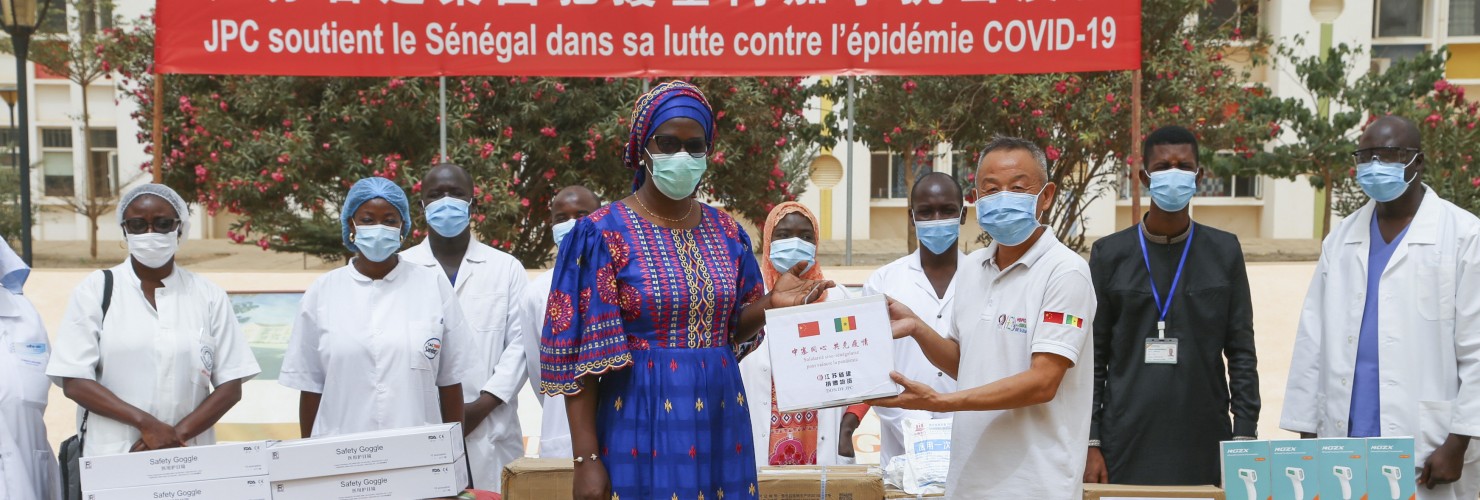

China’s “Health Silk Road”: Adapting the BRI to a pandemic-era world
The larger Belt and Road Initiative is framed as a necessary component of the world’s post-corona economic recovery, but it is the Health Silk Road that takes pride of place in China’s Covid-era diplomacy. This article is the second in a three-part BRI Tracker series on China’s Health Silk Road. See also the previous post on China's vaccine diplomacy and the third post on China’s efforts to pursue global health leadership.
There’s a “Digital Silk Road” (数字丝绸之路) and a “Space Silk Road” (太空丝绸之路), so it should come as no surprise that China is also building a “Health Silk Road” (健康丝绸之路). Since Covid-19 emerged in Wuhan, the Health Silk Road, a concept that goes back to 2015, has taken on new meaning. English-language media zeroed in on the phrase when Xi mentioned it in March 2020 on a phone call with Italian Prime Minister Giuseppe Conte.
Pandemic-related restrictions on trade and travel have choked the supply of Chinese workers, equipment, and supplies needed on BRI projects, and developing countries are also facing debt distress amid corona-related economic crises. The BRI is in trouble, but health conferences are no substitute for building power plants. Rather than a substantive transformation, the HSR therefore represents a topical redirection of the BRI’s narrative energies. One caveat is that the pandemic and the HSR do represent a real opportunity for Beijing to advance the “digital” component of the BRI in conjunction with health issues, through the sharing of Chinese diagnostic systems and digital health monitoring solutions.
China’s global health work focusses largely on controlling the Corona narrative
China’s current global health work seems largely about Beijing’s ability to influence the global narrative on the coronavirus. Against the backdrop of deteriorating US-China relations, the origins and handling of the virus have been highly politicized. President Donald Trump has branded the Covid-19 the “Chinese” or “China virus,” suggesting it came from a lab in Wuhan, while Beijing has likewise pushed conspiracy theories that the virus originated in the US. Beijing has published a sanitized timeline of Covid-19’s outbreak in Wuhan, ignoring the authorities’ delayed response and early mishandling of the virus, while Trump has sought to distract from his administration’s missteps by blaming China for the severity of the pandemic.
Seeking to control the narrative and burnish China’s reputation, Beijing has embarked upon a concerted campaign of what English language media has called “mask diplomacy.” Starting in March 2020, Beijing has very publicly dispatched medical teams and personal protective equipment through its embassies and local associations. Chinese companies and institutions have also pitched in, with the Jack Ma Foundation reportedly donating PPE to 150+ countries since the pandemic began. Controversially and in keeping with traditionally loose Chinese definitions of “aid”, Beijing has implicitly bracketed commercial contracts within the same realm of charitable activity as donations.
Sending PPE along the BRI did little to convince audiences in the West
Beijing’s “mask diplomacy” has had mixed results. Clearly tokenistic gestures like sending PPE by rail along the “New Silk Road” to Spain have done little for cynical audiences in the West, and the EU High Representative for Foreign Affairs had publicly acknowledged a global “war of narratives” over the coronavirus, implicitly calling Beijing out for its “politics of generosity.” Reports of faulty Chinese equipment and official accusations against China of disinformation have also hardened sceptics against Beijing’s overtures.
Elsewhere in Europe, mask diplomacy has had more success. In Serbia, President Alexander Vucic literally kissed the Chinese flag in recognition of Beijing’s aid, while billboards in the capital Belgrade thanked “Brother Xi” for his assistance. Sino-Serbian friendship is not a new phenomenon, but the pandemic does appear to have brought the two closer together. Mask diplomacy might not have won Beijing new friends, but it has deepened both existing ties and tensions.
The “Community of common health” is Xi’s new buzzword in presenting a friendly China
A few days after his call with the Italian Prime Minister Xi claimed his willingness in a phone call with France’s leader to build a “community of common health for mankind” 人类卫生健康共同体 – a term that is actually in wider currency than “Health Silk Road.” This phrase is the health-related equivalent of the slogan “community of common human destiny” (人类命运共同体) – the end-goal of the BRI and a semi-utopian concept that is supposed to signal Beijing’s well-meaning intentions toward the international community.
“Community of common health” and its various translations have come up frequently during phone calls to world leaders made by Xi Jinping as part of Covid-19 public diplomacy efforts. There’s an entire chapter on “Building a Global Community of Health for All” in a white paper on China’s fight against Covid-19 that was issued by the State Council in June, and it was the title of Xi Jinping’s address to the virtual opening of 73rd World Health Assembly.
Covid-19 has changed everything, China’s development assistance for health (DAH) and global health leadership ambitions notwithstanding. Just as Beijing’s DAH has become “mask diplomacy”, so have its ambitions become pandemic orientated.
With the USA having “terminated” its relationship with the WHO, the stage is set for Xi to re-create the optics of Davos in 2017 – that of China championing multilateralism and taking the helm amid Western decline and disfunction.
